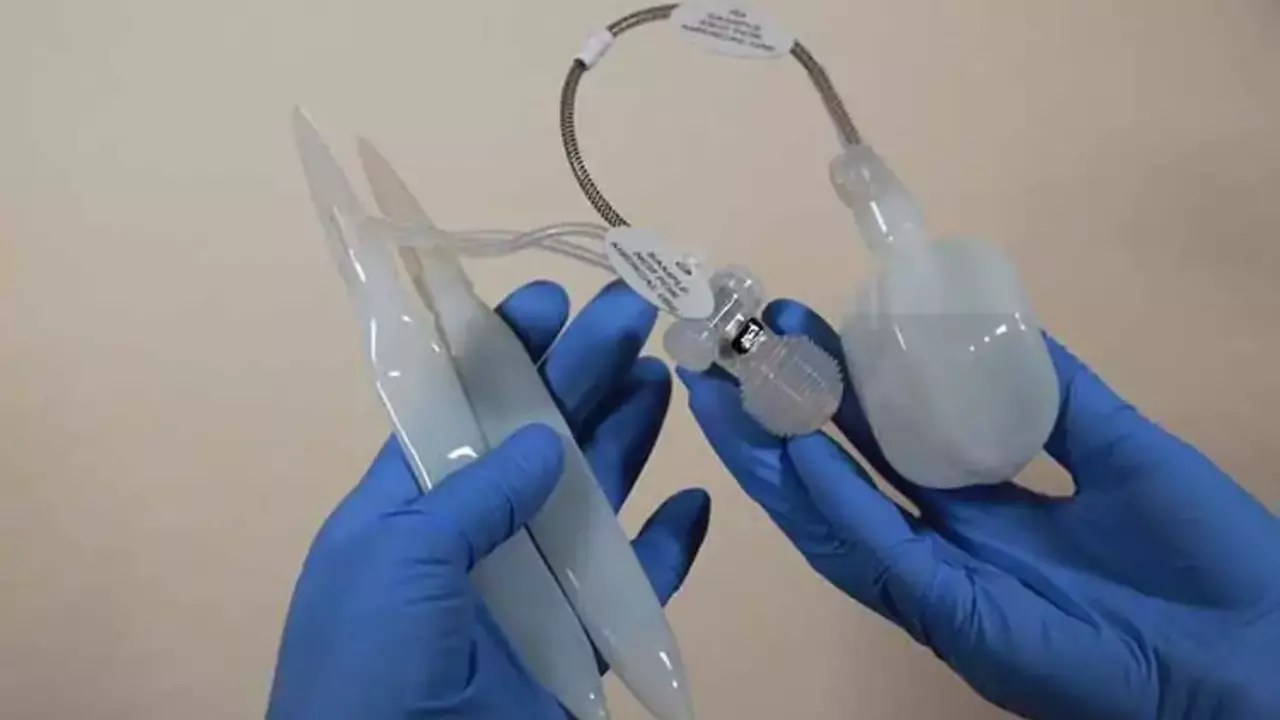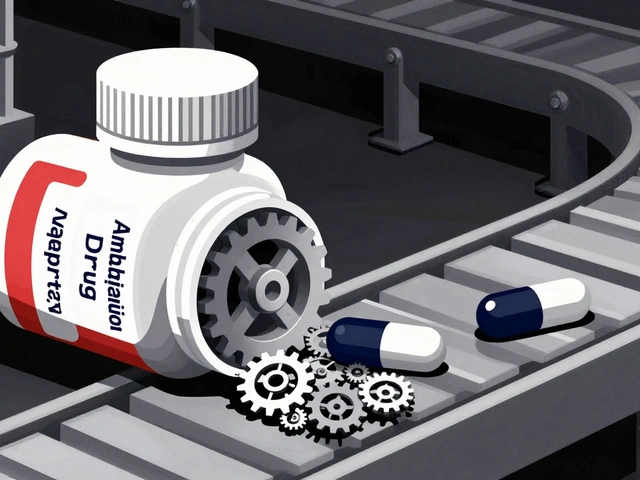
Understanding Penile Prosthesis
Before we delve into the role of penile surgery in treating complications related to penile prosthesis, it's essential to understand what penile prosthesis is. A penile prosthesis is a device implanted into the penis, primarily used to treat erectile dysfunction. This medical procedure has helped many men regain their sexual function. However, like all surgeries, penile prosthesis has potential complications that require surgical intervention to correct.
Common Complications of Penile Prosthesis
Penile prosthesis surgery is generally safe, but complications may occur. Some of the common complications include infections, mechanical failure of the device, erosion of the device, and patient dissatisfaction due to cosmetic or functional concerns. These complications can have a significant impact on a man's quality of life and self-esteem, making it essential to address them promptly.
The Role of Penile Surgery in Treating Infections
Infections are one of the most common complications following penile prosthesis implantation. In such cases, penile surgery plays a critical role in treating the infection by removing the infected prosthesis and replacing it with a new one. Antibiotics are also usually administered to help fight the infection.
Addressing Mechanical Failure Through Surgery
Mechanical failure is another common complication of penile prosthesis. Penile surgery is the mainstay of treatment in these situations. The faulty prosthetic device has to be surgically removed and replaced with a functional one. In some cases, parts of the device may need to be repaired or replaced.
Surgery for Erosion of Prosthesis
Erosion of the prosthesis, where the device wears through the skin of the penis, is a severe complication that requires immediate surgical intervention. The eroded prosthesis is removed, the area is cleaned and treated, and a new prosthesis may be implanted at a later date when the tissue has healed.
Managing Patient Dissatisfaction with Surgery
Some patients may be dissatisfied with the appearance or function of their penile prosthesis. In such cases, penile surgery can help address these concerns by correcting the position, size, or type of the prosthesis. It's important to have a thorough discussion with the patient about their expectations and the potential outcomes of the surgery.
The Process of Penile Surgery for Prosthesis Complications
Penile surgery for prosthesis complications is a delicate procedure that requires a skilled surgeon. The process usually involves removing the existing prosthesis, treating the complication, and then implanting a new device. In some cases, further procedures may be required to address associated issues.
Post-Surgery Care and Recovery
After penile surgery, it's crucial for patients to follow all post-operative care instructions to ensure a smooth recovery and prevent further complications. This includes taking prescribed medications, keeping the surgical area clean, and avoiding sexual activity until cleared by the doctor.
The Impact of Penile Surgery on Quality of Life
When performed successfully, penile surgery can dramatically improve a man's quality of life by resolving prosthesis complications. It can restore sexual function, improve self-esteem, and enhance overall well-being. However, it's important to have realistic expectations and understand that results can vary from person to person.








12 Comments
Having perused the exposition on prosthetic complications, I must underscore-though perhaps it bears repeating-that the surgical remediation is not merely a mechanistic fix; it is, indeed, a nuanced orchestration of tissue integrity, antimicrobial stewardship, and patient expectation management.
It is commendable that the article delineates each complication with clarity, and I would like to add that a multidisciplinary approach-incorporating urology, infectious disease, and mental health professionals-can further optimize outcomes. Moreover, postoperative counseling should be delivered with unwavering empathy, fostering a therapeutic alliance that extends beyond the operating theatre. 😊
From a technical standpoint, the device‑failure rates are often influenced by the type of hydraulic pump employed; defnitely the newer magnetic‑coupled systems present lower mechanical wear. Yet, real‑world surgery data suggests that implantation technique variance can skew those stats, so we gotta keep an eye on the kinesthetic nuances.
While the procedural steps are well‑described, I wish to emphasize the paramount importance of pre‑operative patient education; an informed patient is less likely to experience dissatisfaction post‑implantation. Surgical precision, certainly, mitigates erosion risk, yet the surgeon’s deftness in preserving the Buck’s fascia is equally critical. I advocate for routine intra‑operative Doppler assessments to verify corpora integrity before prosthesis placement.
Only seasoned American surgeons should tackle these cases! 🇺🇸
Let us celebrate the art of healing, for each incision is a bridge between science and the human spirit. A simple, well‑timed postoperative check can make all the difference.
Contemplating the intersection of technology and intimacy, one cannot help but marvel at how far we have come; yet, we must stay humble before the mysteries of desire. 🌟
In my experience, the recovery timeline varies dramatically; some patients resume activity within weeks, while others require months of careful rehabilitation. It is essential to tailor follow‑up schedules to individual healing trajectories, ensuring that neither haste nor undue delay compromises the final result.
The article’s overview is comprehensive, yet I would add that emerging antibiotic‑impregnated coatings on prosthetic components are showing promise in reducing infection rates. Continued research in biomaterials could revolutionize our standard of care, paving the way for implants that not only function flawlessly but also integrate seamlessly with host tissue.
Indeed, Tammy's point about intra‑operative Doppler is salient; employing real‑time vascular imaging can preempt catastrophic corpora injuries, which, as we know, are a leading cause of postoperative erosion.
Precisely, Casey; the synergy between meticulous surgical technique and robust antimicrobial protocols constitutes the cornerstone of successful prosthetic management. Your emphasis on patient expectation aligns perfectly with a holistic care model.
The moral imperative behind penile prosthesis revision lies not merely in restoring erectile function but in upholding the intrinsic dignity of the individual, a principle that must be enshrined within every surgical charter. First, one must acknowledge that infections, while statistically infrequent, represent a breach of the sterile covenant between clinician and patient; thus, a zero‑tolerance policy towards peri‑operative contamination is non‑negotiable. Second, the mechanical reliability of the prosthetic hardware is a direct reflection of rigorous engineering standards, and any deviation from these benchmarks warrants immediate surgical rectification. Third, erosion, as described, is a harbinger of tissue necrosis, demanding swift excision and meticulous reconstruction to prevent irreversible damage. Fourth, patient dissatisfaction, often rooted in mismatched expectations, should be preempted through exhaustive pre‑operative counseling, lest we perpetrate a form of iatrogenic psychologic harm. Fifth, postoperative rehabilitation protocols must be evidence‑based, integrating both pharmacologic and physiotherapeutic modalities to optimize functional recovery. Sixth, the surgeon’s ethical duty extends to transparent disclosure of potential complications, enabling true informed consent. Seventh, interdisciplinary collaboration with infectious disease specialists can refine antibiotic stewardship, reducing the risk of resistant organism emergence. Eighth, the advent of antimicrobial‑coated implants promises to curtail infection rates, yet rigorous longitudinal studies remain imperative to validate these innovations. Ninth, cost‑effectiveness analyses reveal that proactive surgical interventions, though initially expensive, ultimately reduce the socioeconomic burden of chronic complications. Tenth, cultural competence is essential, as patients’ values and beliefs profoundly influence their perception of surgical outcomes. Eleventh, the literature consistently underscores the correlation between surgeon experience and reduced complication rates, reinforcing the need for specialized training. Twelfth, regulatory frameworks must evolve to encompass emerging technologies, ensuring patient safety remains paramount. Thirteenth, patient‑reported outcome measures should be integrated into clinical practice to capture the nuanced impact on quality of life. Fourteenth, ongoing professional development, including simulation‑based training, can hone the technical acumen required for these delicate procedures. Finally, the overarching goal must remain unwavering: to restore not just function, but the holistic well‑being of the individual, honoring both body and psyche.